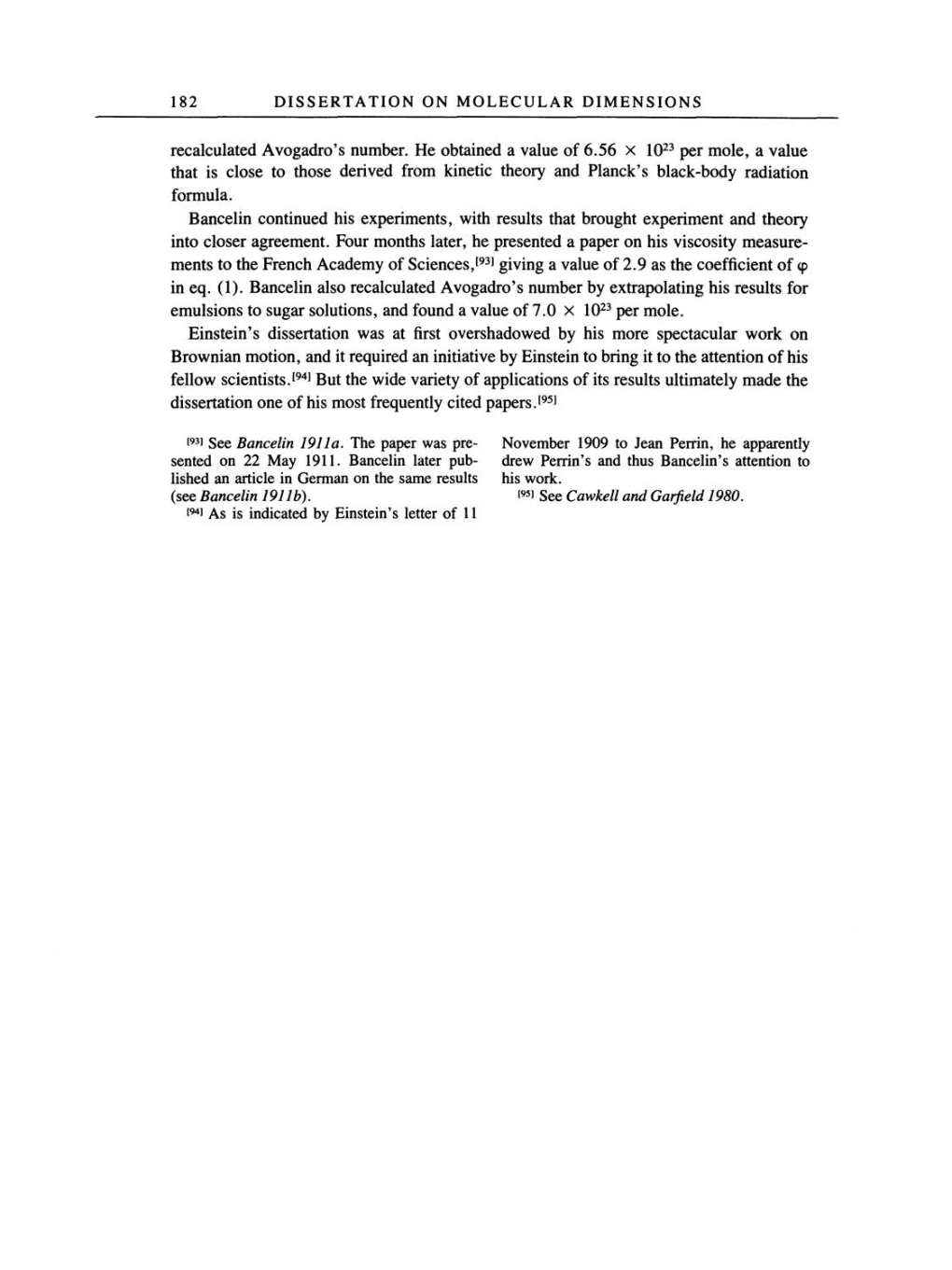182 DISSERTATION ON
MOLECULAR
DIMENSIONS
recalculated
Avogadro's
number. He obtained
a
value
of 6.56
x
1023
per mole,
a
value
that is
close to those derived from kinetic
theory
and
Planck's
black-body
radiation
formula.
Bancelin continued his
experiments,
with results that
brought
experiment
and
theory
into
closer
agreement.
Four months
later,
he
presented a paper on
his
viscosity measure-
ments to the French
Academy
of
Sciences,[93] giving a
value
of
2.9
as
the
coefficient
of
9
in
eq.
(1).
Bancelin also recalculated
Avogadro's
number
by
extrapolating
his
results for
emulsions to
sugar
solutions,
and found
a
value
of 7.0
x
1023 per
mole.
Einstein's
dissertation
was
at first overshadowed
by
his
more
spectacular
work
on
Brownian
motion,
and it
required an
initiative
by
Einstein to
bring
it to the
attention of
his
fellow
scientists.[94]
But the wide
variety
of
applications
of
its results
ultimately
made
the
dissertation
one
of
his most
frequently
cited
papers.[95]
[93]
See
Bancelin
1911a. The
paper was pre-
sented
on
22
May
1911. Bancelin later
pub-
lished
an
article in German
on
the
same
results
(see
Bancelin
1911b).
[94]
As is indicated
by
Einstein's
letter
of
11
November
1909
to
Jean
Perrin,
he
apparently
drew
Perrin's
and thus
Bancelin's
attention to
his work.
[95]
See Cawkell
and
Garfield 1980.
